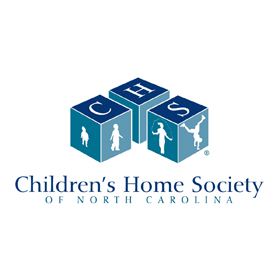Children’s Home Society of NC (CHS) worked in partnership with Chapin Hall at the University of Chicago to develop a leading-edge practice model to build on the strengths of its Foster Care to Permanency program. A CHS and Chapin Hall team, as well as foster parents, birth parents, and youth with foster care experience, partnered to develop this practice model with the goal of improving stability, permanency, and well-being outcomes for the children in our care, and beyond. This work, that has included scanning the field and reviewing best practices, has led CHS to focus on a few specific areas, including shared parenting and reunification.
At CHS, we believe that children do best when they grow up in a family, and that the goal of our program is to create the best opportunity for children to leave foster care and transition to a permanent family, whether it be through reunification, guardianship with relatives or fictive kin, or adoption.

Jaquia Wilson
“Our work in developing the practice model and creating an intentional process for what’s best for the child in the system we work in has prompted a shift in our role in reunification,” said Matt Anderson, CHS Vice President of Programs. “Since we began this process, we have seen a significant increase in the number of our youth reunified with their families of origin. We want to continue to partner with others to lead a shift in practice that supports birth parents in their goal to reunify with their children.”
Reunification is the first desired outcome for children and their families involved in the foster care system. When children are removed from their family of origin, they experience a tremendous loss. They are separated from not only their family, but their friends, their school, their community, and their culture. By prioritizing reunification and shared parenting, we can create opportunities for the birth family to remain engaged with their children while they are placed in out-of-home care. Foster parents become partners with birth parents in the everyday care of their children, helping them to remain connected, dignified, and empowered in their role as a parent.
“Families come in all shapes and sizes, and blended families are important. Young people in foster care should have more rather than fewer people in their lives. Youth shouldn’t be forced to choose between foster parents and birth family. They should be helped to learn how to navigate all of the complicated, important, and even unhealthy relationships in their lives,” said Jaquia Wilson, alumni of foster care and SaySo Community Engagement Coordinator.
Additionally, the children can see their birth parents and foster parents work in partnership to meet their needs. Foster parents can also play a mentoring role to birth parents as they work to reunify with their children. CHS is fully committed to supporting the successful reunification of children in foster care to their families, and shared parenting is an excellent way to strengthen these efforts.
“It’s about finding the best solution for the child and their family, and how we keep them intact with all the meaningful relationships they have, have had, and will have,” Anderson added.

Anderson recently hosted a discussion on the Foster Care to Permanency Practice Model. Brett Crisp, who served on the practice model advisory team as the voice of a foster parent, shared, “When the little girl placed in our care was reunified with her birth family, it redefined what our family was going to look like going forward. We had a different outcome than what we went into it expecting. Yet, we were able to see that it was the best outcome for everyone, including our family. We still have a positive and supportive relationship with the birth family. This has been one of the most meaningful experiences in our lives.”
CHS is partnering with Guilford County DHHS to develop tools social workers, foster parents, and birth parents can use to establish effective partnerships between foster parents and birth parents. When children first enter foster care, their birth parents will be given a flyer that provides them with details about the foster family who will be caring for their children. The flyer even includes pictures of the foster family and their home. This tool helps to ease the fears and apprehensions birth parents experience when their children are removed from their care. Likewise, the birth parent will share information about their family, their children, and their wishes while their children are separated from them.
Within seven days of children being placed in a foster home, CHS placement specialists will facilitate a phone call between the birth parents and foster parents. CHS foster parents understand that birth parents are the experts on their children, and this call allows foster parents to gain insight about the child’s specific needs. CHS foster parents will also use the phone call as an opportunity to lay the foundation for a positive and supportive partnership.
Additionally, CHS is developing a new training curriculum to provide families being licensed with more extensive education on the benefits of shared parenting and reunification. The training will also include a series of short videos for social workers and foster parents that will help to break down some of the natural challenges to effective shared parenting. These videos will include foster parents and birth parents together talking about successful shared parenting and reunification.

“One of the things I am most excited about is increased shared parenting, with focus on the birth parent and building relationships so that when the child does go home, the child has more of a community and more support, and the family has more support,” said Stephanie Robinson, CHS Placement Specialist.
“Shared parenting is such a positive thing. When the child goes home, if the child goes home, the child will definitely be a part of the foster parent’s life. And if the child stays with the foster parent, the birth parent will definitely be a part of the child’s life. Either way, the child wins,” added Robinson.
Crisp closed with “I hope that more foster families can have the same experience we had, so they can broaden their view of what family means. It means not only welcoming the child but welcoming the family. And, we have been welcomed just as much as we have extended a welcoming arm.”
CHS is a licensed child-placing agency in North Carolina.


